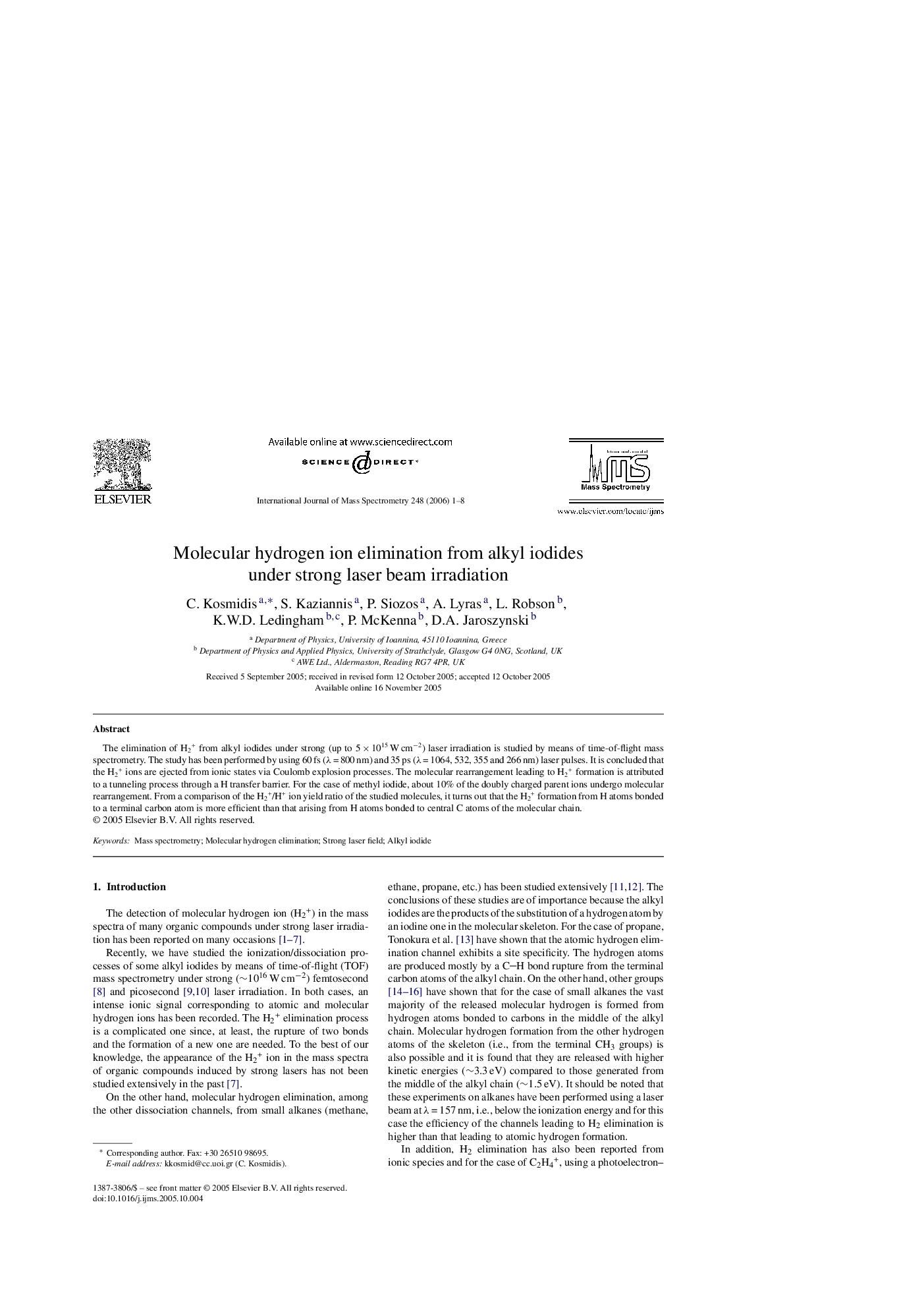| Article ID | Journal | Published Year | Pages | File Type |
|---|---|---|---|---|
| 1194840 | International Journal of Mass Spectrometry | 2006 | 8 Pages |
Abstract
The elimination of H2+ from alkyl iodides under strong (up to 5 Ã 1015 W cmâ2) laser irradiation is studied by means of time-of-flight mass spectrometry. The study has been performed by using 60 fs (λ = 800 nm) and 35 ps (λ = 1064, 532, 355 and 266 nm) laser pulses. It is concluded that the H2+ ions are ejected from ionic states via Coulomb explosion processes. The molecular rearrangement leading to H2+ formation is attributed to a tunneling process through a H transfer barrier. For the case of methyl iodide, about 10% of the doubly charged parent ions undergo molecular rearrangement. From a comparison of the H2+/H+ ion yield ratio of the studied molecules, it turns out that the H2+ formation from H atoms bonded to a terminal carbon atom is more efficient than that arising from H atoms bonded to central C atoms of the molecular chain.
Related Topics
Physical Sciences and Engineering
Chemistry
Analytical Chemistry
Authors
C. Kosmidis, S. Kaziannis, P. Siozos, A. Lyras, L. Robson, K.W.D. Ledingham, P. McKenna, D.A. Jaroszynski,
